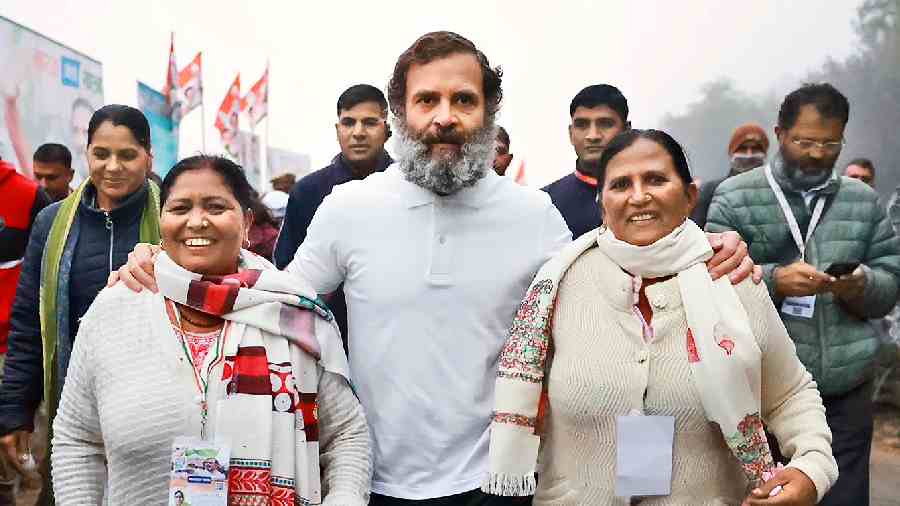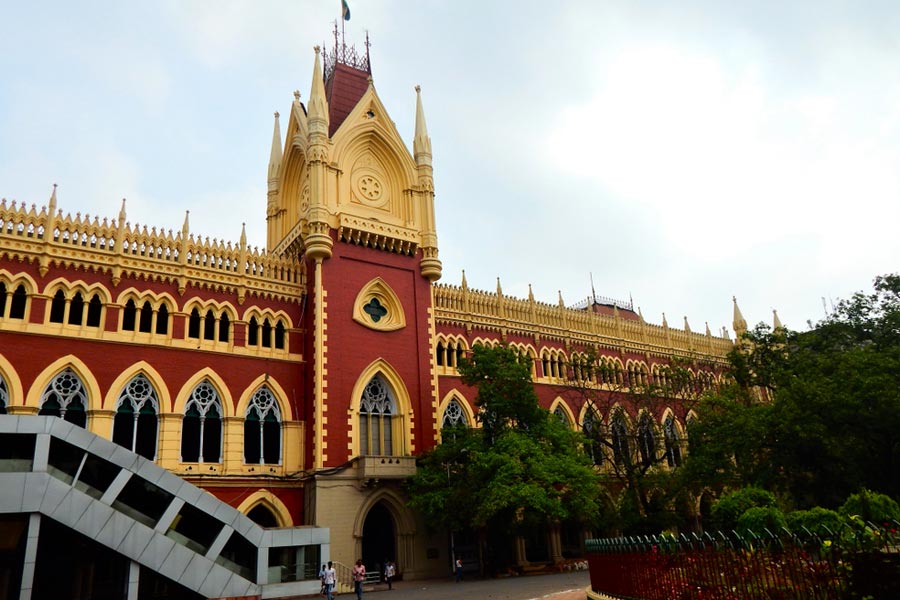The hallmark of the Bharat Jodo Yatra is its duration. You can ignore it for weeks on end and then it comes into view again. Test matches wind to a close, Delhi’s pollution peaks and eases, bloody, attritional battles in Ukraine end in stalemate and then, in some newspaper photo on an inside page or a hostile tweet chorused out by the sangh’s troll army, you catch a glimpse of Rahul Gandhi on the road, still walking.
The most visible measure of this long march’s length is Rahul’s beard. When he started marching in Kanyakumari, he was clean-shaven. By the time he entered Punjab on the latest leg of the yatra, his face had flowered into a salt-and-pepper riot. If this was some image-making maven’s brainchild, it’s worked. He has grown into a kind of gravitas. When he wore a saffron turban to visit the Golden Temple, he looked normal, not costumed as the prime minister does when he preens in ethnic motley. Given the baggage he and the Congress have carried post the pogrom of 1984, to complete such a visit without incident was an achievement in itself.
Kanyakumari to Kashmir is an inversion of the usual order; India’s diversity is generally invoked from north to south. Given that Rahul has been driven from Amethi to a safe seat in Kerala, it’s appropriate that this bid to get the nation’s attention began in Tamil Nadu and Kerala, states that have till now resisted Narendra Modi’s minority-bashing magnetism.
Asim Ali wrote an excellent piece on what he thought the political purpose of the Bharat Jodo Yatra was: the shoring up of Congress support and morale in states in which it was still a significant player. This would partly explain the route which lingers in states like Kerala, Karnataka, Madhya Pradesh, Rajasthan and Punjab, while barely touching northern heartland states like Uttar Pradesh and Bihar, where the Congress has been reduced to a bit player.
Apart from this defensive purpose, this rearguard action designed to avoid political extinction, the yatra gestures at a larger goal, literally the joining-up of India, as an implicit response to the divisive chauvinism of the Bharatiya Janata Party. ‘Bharat Jodo’ is also, in passing, a repudiation of the routine slander that the ruling party perpetuates about its opponents being the ‘tukde-tukde gang’, dedicated to the disintegration of India.
But all of this would have been no more than an adman’s clever messaging had Rahul Gandhi not kept walking for four months and more. The yatra didn’t get much screen time on India’s news channels and didn’t exactly make the headlines in its newspapers. This had something to do with the crawling deference that the ruling party expects and generally gets from mainstream media, but the absence of coverage was also down to Rahul Gandhi’s arrested development as a politician.
If Sonia Gandhi was the dowager queen, Rahul had been typecast as the dauphin, forever apprenticed to the top job without ever displaying the stamina or political nous to lead the country’s principal, pan-Indian Opposition party. When the yatra began, the Congress had just conducted a Stakhanovite election and installed Mallikarjun Kharge, a family loyalist, as party president. The election had exposed the political incoherence of a dynastic political party that was no longer capable of commanding loyalty from its provincial leaders.
Ashok Gehlot, the chief minister of Rajasthan, refused point-blank to relinquish provincial power in exchange for the notional dignity of presiding over the all-India party. The inability of Congress dynasts to swing elections for its satraps for more than twenty years now has seen the defection of a string of provincial heavyweights from its ranks: Sharad Pawar, Mamata Banerjee, Jagan Mohan Reddy, Himanta Biswa Sarma have defected from the Grand Old Party and successfully set up shop on their own, leaving the Congress much diminished in their strongholds.
The Congress’s recent inability to keep Jyotiraditya Scindia on board and Sachin Pilot’s apparent willingness to use the BJP card for political leverage, had raised, in the starkest possible terms, an existential question for the Congress’s first family: if it couldn’t supply the funds or charisma essential for winning elections, what was it for? What was the point of Rahul Gandhi, the part-time politician, if he could neither formally lead the Congress nor let go of it?
The Bharat Jodo Yatra hasn’t come close to answering this question, but it has succeeded in filling the inhospitable vacuum that was the Congress, with air. There is a subdued, but increasingly animated, conversation about Rahul Gandhi and the Congress that suggests, for the first time in years, stamina, purpose and the capacity to mobilise citizens for a cause.
So, when the yatra began, it wasn’t unreasonable to ignore it. But over the last four months, the spectacle of a knot of yatris persistently walking the length of the republic with Rahul in the middle, has won the attention and captured the imagination of some political peers and citizens. Some of this interest is down to desperation: the BJP’s electoral success and its ever more brazen majoritarianism have left its critics clutching at straws.
Political redemption is an unfair burden for Rahul Gandhi to shoulder but what he has managed is to set a counter-narrative in motion. There is a relentlessness about Hindutva and its propagandists that exhausts its opponents and gives it an air of inevitability. To lead a caravan of walkers through the length of India in the name of joining up a divided nation and healing it is a morally unimpeachable enterprise. Whether it is politically useful is another matter, but the rage that it has provoked in the sangh parivar suggests that Rahul Gandhi and his cohort are on to something.
By turning up and literally walking the walk, Rahul Gandhi seems to have sloughed off (for the moment) his reputation as an entitled, non-doing dynast. Since no one gives him any credit for political intelligence or premeditation, he has cornered the small market for political idealism. The Aam Aadmi Party used to own it earlier in the glory days of India Against Corruption, but Arvind Kejriwal’s remarkable gift for realpolitik and, ironically, his electoral success, has created a vacancy that has been filled by Rahul Gandhi’s display of pedestrian virtue.
The white t-shirt and the out-of-control beard convey a sense of unkempt purpose. Rahul Gandhi in mid-shot, talking to his fellow walkers, to the general public, taking questions, embracing people who join him, seems accessible and politically engaged. It’s hard to know if he can channel the goodwill that the yatra has generated into retail politics, but for the Congress, after years of nothing happening, something’s afoot.
mukulkesavan@hotmail.com











